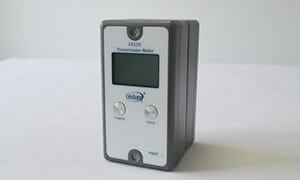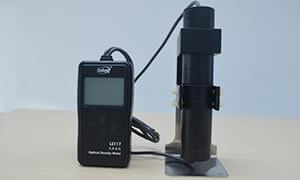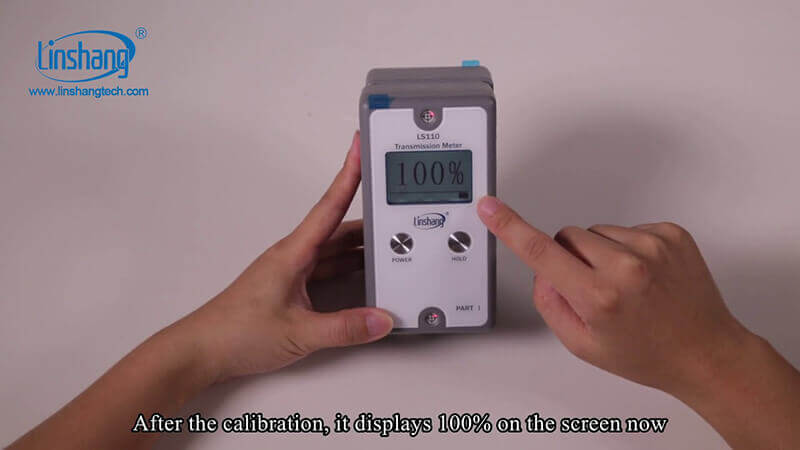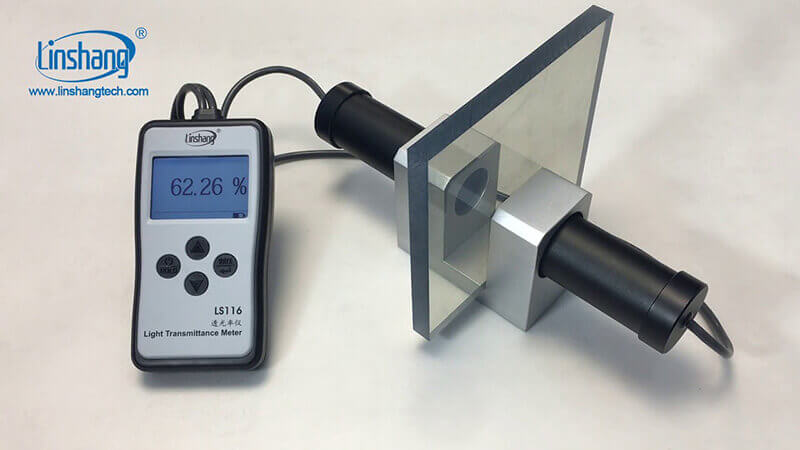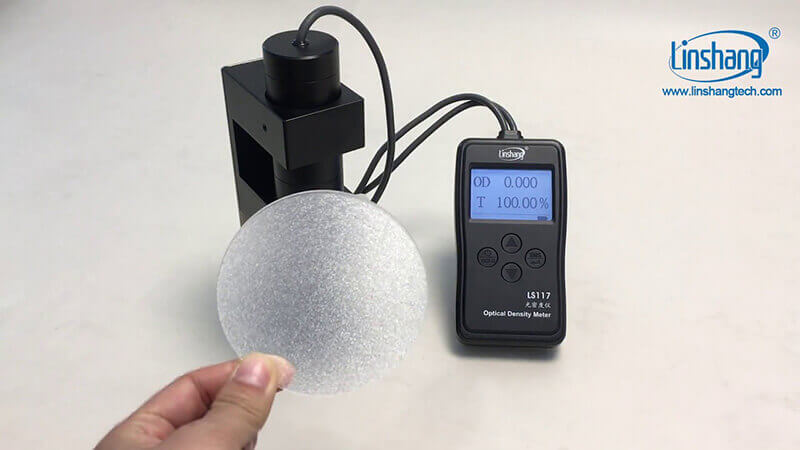How to Choose Light Transmittance Meter?
I. Light transmittance meter and its working principle
1. What is light transmittance?
Light transmittance is the transmittance of visible light, which is simply the percentage of luminous flux that passes through a transparent or translucent material. The light transmittance value indicates the physical properties of the material and is also a physical vocabulary. Assuming that a parallel monochromatic light passes through a medium without scattering and uniformity, the light will encounter various situations, some of the light will be absorbed, some of the light will be reflected and some of the light will pass through the medium. The transmittance value indicates the efficiency of the display medium to transmit light and will give people different visual effects.
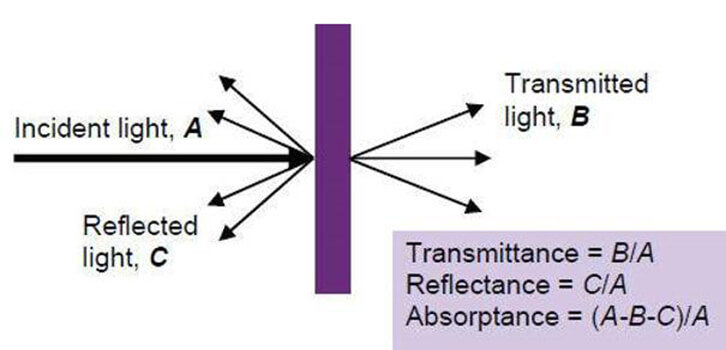
A: incident light, B: transmitted light, C: reflected light
Transmittance = B / A
Reflectance = C / A
Absorption rate = (A-B-C) / A
The application scenarios of different materials are different, so the requirements for the light transmittance value of the materials are different. Usually we will use the light transmittance meter to measure the light transmittance of the material.
2. Light transmittance meter working principle
There are two main types of light transmittance meters on the market: regular transmission and diffuse transmission principles. Below we make a brief introduction to these two principles.
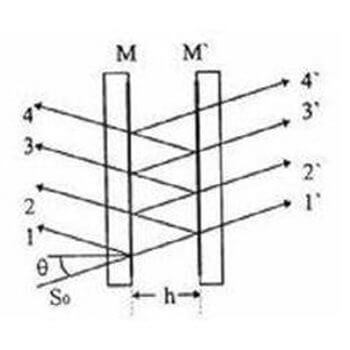
(1) Regular transmission principle
Regular transmission specifically refers to the deflection in the propagation direction of light at only one angle in a medium on a smooth surface and a uniform interior. We call this phenomenon regular transmission of materials, also known as direct transmission. The biggest feature of regular transmission is that the image transmitted through the medium can be seen through the medium of regular transmission. Common regular transmission materials in life include glass, transparent acrylic, automotive glass, glasses, transparent mobile phone case, protective film, etc. Common flat glass and door and window glass have the characteristics of regular transmission. Compared with diffuse transmission, they have the characteristics of high transmittance for the visible light band, that is, high light transmittance!
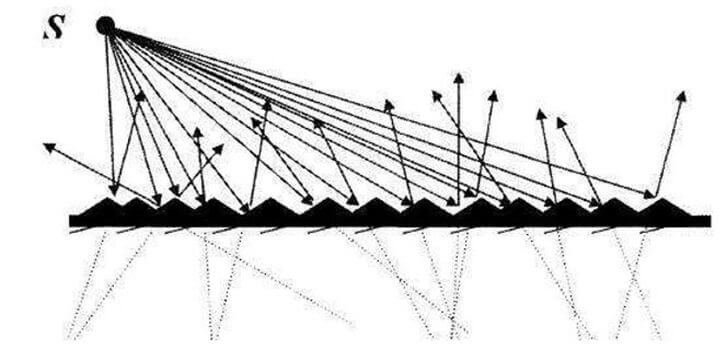
(2) Diffuse transmission principle
Diffuse transmission specifically refers to the phenomenon that light rays are refracted non-directionally on uneven surfaces or materials with uneven internal media. We call this phenomenon diffuse transmission. Diffuse transmission is very different from regular transmission. The biggest difference between diffuse transmission and regular transmission is that light in the medium with diffuse transmission material will deflect in the direction of propagation at multiple angles. The diffuse transmission with the same brightness in each propagation direction is also called uniform transmission. However, the image of materials with diffuse transmission characteristics cannot be seen clearly. Therefore, materials with diffuse transmission characteristics generally block the line of sight and the light transmission is relatively poor compared to regular transmission. Common diffuse transmission materials are frosted glass, diffusion plate, film, light guide plate, lampshade, sun protection film, air conditioning panel, frosted material, opalescent material, plastic bag, plastic light transmittance meter, smoke density box, zirconia, ink.
3. Calculation formula of light transmittance
(1) Calculation formula of light transmittance
Transmittance = (incident light intensity / original light intensity) * 100%
The original light intensity in the transmittance calculation formula is generally a fixed value. The stronger the incident light intensity, the higher the light transmittance. Then the better the light transmission of the material. On the contrary, when the incident light intensity value is smaller, the light transmittance value is lower. Then the light transmittance of the material is worse.
(2) Calculation formula of optical density value
OD = log10 (incident light / transmitted light) or OD = log10 (1 / transmittance)
In the calculation formula of optical density value, OD is optical density, which is defined as the logarithm of the ratio of incident light to transmitted light or the logarithm of the reciprocal of light transmittance. The value of light transmittance is a percentage and the value range is 0 ~ 100%. If the light is completely absorbed by the medium and if the light is fully transmitted. The reciprocal of the light transmittance reflects the degree of light absorption by the medium. For the convenience of calculation, the logarithm of the reciprocal of the light transmittance is taken as the absorbance. Most companies use this formula for their light transmittance products or densitometer products, but we know that light will refract, scatter and reflect. Therefore, different light transmittance meter manufacturers will have their own adjustment methods to achieve high measurement accuracy.
4. Why do we measure the light transmittance value of the material?
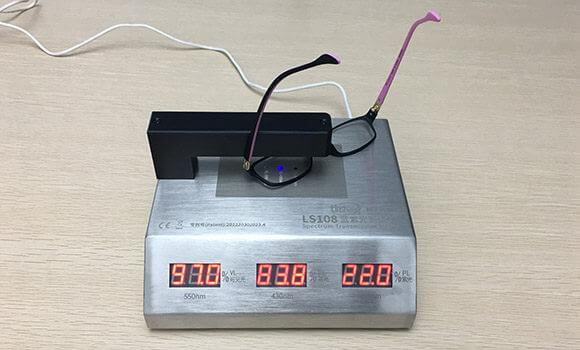
4.1 Why do we measure the transmittance of glasses?
Visible light has a great impact on people's lives and production. There are certain requirements for the transmittance of visible light in different applications. For example, glasses, glasses have visible light transmittance requirements. If the light transmittance of glasses is not good, it will directly affect our sight. It's just that a good silver mirror not only has the demand for light transmittance, but also has the characteristic of blocking blue and purple light.
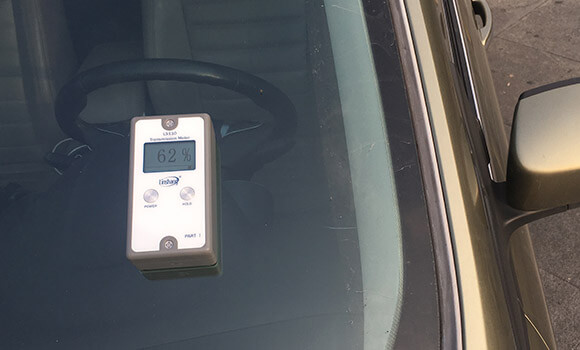
4.2 Why do we measure the light transmittance of glass and greenhouse film?
Glass light transmittance also needs to be measured. If it is tempered glass for windows, the poor transmittance of tempered glass may directly affect the indoor lighting. If the light transmittance value of the greenhouse film is unqualified, it may affect the photosynthesis of plants. The safety standard for automobile safety glass in " Safety glazing materials for road vehicles" is GB9656-2016. The safety standards are stipulated in this way. The visible light transmittance of the front windshield and the glass other than the windshield used for the driver ’s visual area (referring to the part used by the driver to observe the rearview mirror) should be greater than or equal to 70%. Window glass shall not post mirror reflective film. In other words, the film transmittance of the front windshield must reach 70% to be qualified. Therefore, different materials will have different requirements for light transmittance.
II. How to choose light transmittance meter?
1. Test the transmittance of the installed glass or curtain wall glass
For already installed glass, curtain wall glass, automobile glass, etc., you can choose Linshang LS110 portable light transmittance meter. This instrument is composed of two parts of the main and auxiliary machines and has a super strong magnetic force that can be automatically sucked together. It is very suitable for measuring the front windshield glass or large curtain wall glass.
● Measurement accuracy: better than ± 2% (colorless uniform light-transmitting substance)
● Test sample size: greater than 40mm × 40mm
2. Light transmittance meter for testing regular transmission materials
For some regularly transmitted large thickness materials, we can choose Linshang LS116 light transmittance meter. Linshang LS116 light transmittance meter is a professional instrument for measuring the transmittance of uniform and transparent materials. This light transmittance meter adopts a parallel light path design and can be used to measure large thickness materials. The measurement accuracy is as high as ± 1%, which ensures to pass the test of Chinese Metrology.
● Measurement accuracy: better than ± 1% (colorless uniform light-transmitting substance)
●Thickness of test object: <100mm
3. Measurement of diffuse transmission materials
The light transmission meter LS117, also known as the optical density meter, is a device that can measure optical density and light transmittance at the same time. This instrument can be used to measure the optical density of aluminum coating, X-ray film, ink. LS117 light transmittance meter can also be used to measure the light transmittance of opalescent materials, matte materials, acrylic and other materials. The light source conforms to the CIE photopic luminosity function.
● Optical density measurement range: 0.000 OD --- 6.000 OD
4. Light transmittance meter application industry
The application of the light transmittance meter is very extensive and specific as follows (the following only represents the application of some industries)
III. How to use Linshang light transmittance meter?
Want to know more details about Linshang light transmittance meter operation methods? Please refer to the following video:
- Linshang Insulated Glass Unit Measuring Tools
- Spectacle lens anti-blue light detection---blue-violet light transmittance meter
- Measurement of Optical Density
- Difference of LS116 Transmission & LS117 OD Meter
- Difference between LS116 and LS117 Light Transmittance Meter
- What’s the Difference Between Point Light and Parallel Light Transmittance Meter
